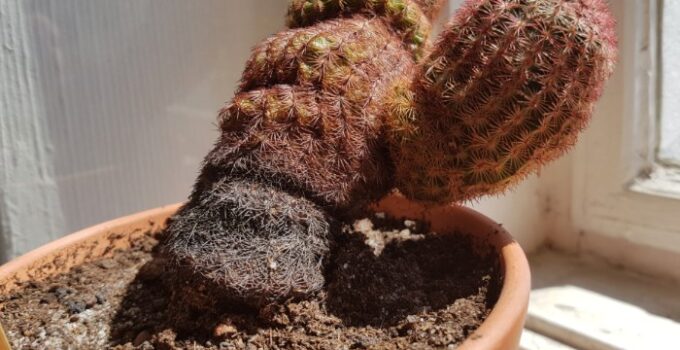Cacti are incredibly resilient: their natural habitat is the desert, after all. However, just because they require very little maintenance doesn’t mean you can neglect them completely. They need a specific care routine to thrive, otherwise, they won’t make it for long. If you’re unsure whether your cacti are in good condition or not, we’re here to help you out.
In this article, we’ll list the most common signs your succulents aren’t doing so well to help you get them back to where they need to be. So, without any further ado, let’s get to the bottom of it!
1. Discoloring of the plant
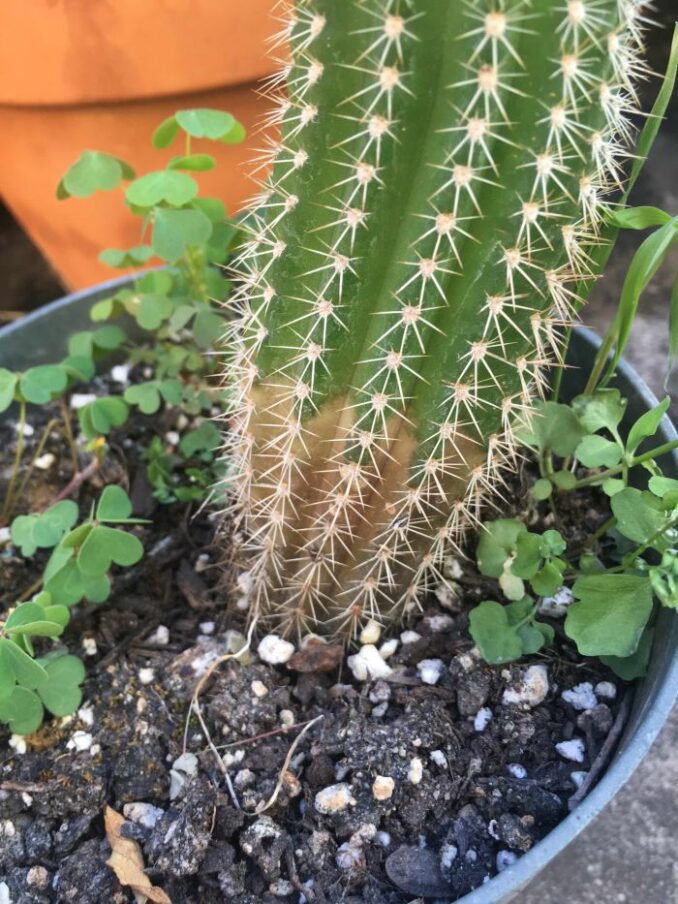
Source:gardening.stackexchange.com
If your cactus changes its color (no matter which part of the plant is affected), it’s time to take some urgent action. Discoloration on the leaves or the stem means your plant is quite possibly rotting from the inside. The main reason for rotten succulents is the excess of water, so make sure you’re not overwatering your plant. Besides that, your soil should be made to cater to the needs of your succulent. Regular soil cannot do the trick because it retains moisture too much.
Overall, if you notice your plant is changing its color, you’ll need to dry out the soil as quickly as you can. Keep a regular watering schedule to ensure you’re not overwatering your cacti, and keep the soil as dry as you can.
2. Swollen stem
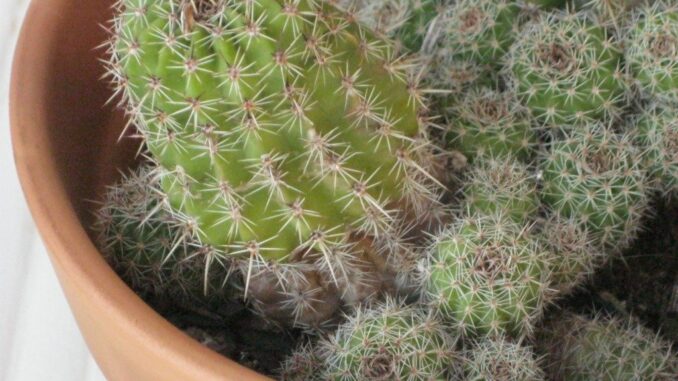
Source:gardeningknowhow.com
A swollen stem is never a good sign when it comes to succulents. If it feels mushy or suspiciously soft, you’re likely dealing with a dying cactus. The stem is like a spine to cacti, and when it’s swollen it means it’s easily breakable. When it comes to these symptoms, prevention is always better than cure. Again, keeping a regular watering routine is key to maintaining the health of your plants. Of course, the amount of water your cactus needs depends on factors like its size, type, and the environment it lives in.
Overall, if you notice the plant’s stem is swollen or soft, it’s time to stop watering it for a while. Keep it out in the sun and ensure you’ve chosen the right type of soil.
3. Rotten leaves
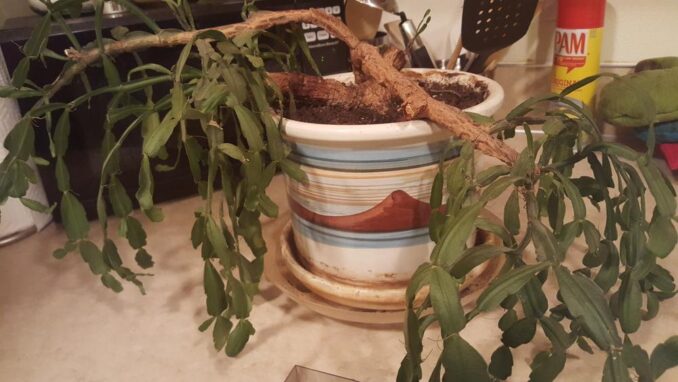
Source:laidbackgardener.blog
Rotting leaves mean your cacti are getting too much water. Make sure to cut the rotten parts as soon as you notice them if you want to save your plant from certain death. The rot will spread quickly, and once it reaches the stem, there’s barely anything you can do to save your succulent.
If you’re not sure how rotten cacti leaves look like, make sure to do some research. Usually, the leaves will look a bit darker than what you’re used to, and you’ll notice the skin getting overly sensitive to the touch. It might even start falling off if you don’t react quickly. So, get the rotten parts off as quickly as you can, and do not overwater the plant. Wait until the soil is completely dry before watering it again to ensure the best possible results.
4. Wrinkly leaves
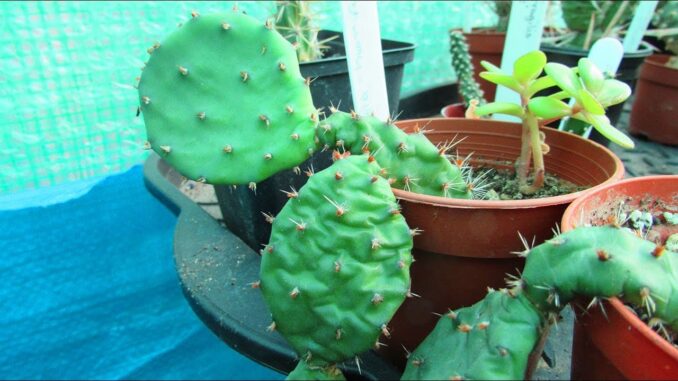
Source:youtube
Wrinkly, limped leaves can are a sign you’re not watering your cactus enough. While succulents don’t require a lot of water, it doesn’t mean you should leave them dehydrated. Finding the right balance between watering too much and watering too little isn’t easy, but it’s completely manageable. All you need to do is track your plant’s progress until you’ve found the routine that works best.
Remember that not all cacti are the same; some species require more attention than others. So, remember to inquire about such details while you’re browsing for a new plant at the Succulent Market it will help you find the optimal routine way sooner.
5. Etiolation: the narrowing cactus
If your cacti are suddenly narrowing down in the wrong parts, you need to expose them to more sunlight. You can either put them near your southern-facing window for longer sun exposure or place them on the western side for more intense sunlight. Whatever you do, make sure you provide your plant with the sunlight, which it so desperately needs.
Besides that, take extra care not to overwater your plants during the sunless winter days (the soil will take longer to dry off without sun exposure). Make use of the short sunny periods whenever possible, and ensure you’re keeping your soil dry.
6. Yellowing skin
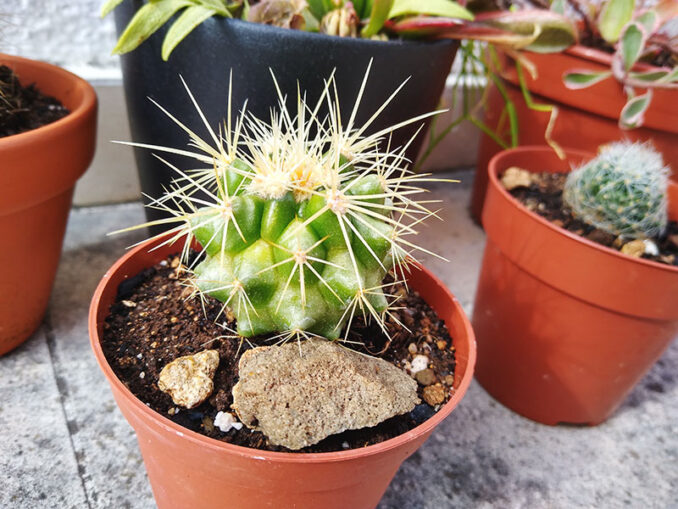
Source:pottingplans.com
Yellow skin on your cacti means only one thing: it’s getting more sunlight than it needs. If you ignore this issue, your plant won’t last much longer, so always check for yellow spots on the leaves. Once you notice these, move your plant to an area with more shade until it recovers. If there are no improvements after a few weeks, simply cut out the yellow parts to keep the issue at bay.
Overall, yellow spots are a certain sign something is terribly wrong with your plant. Luckily, they’re easy to “fix” and manage, especially if you notice them quickly enough.
7. Insects
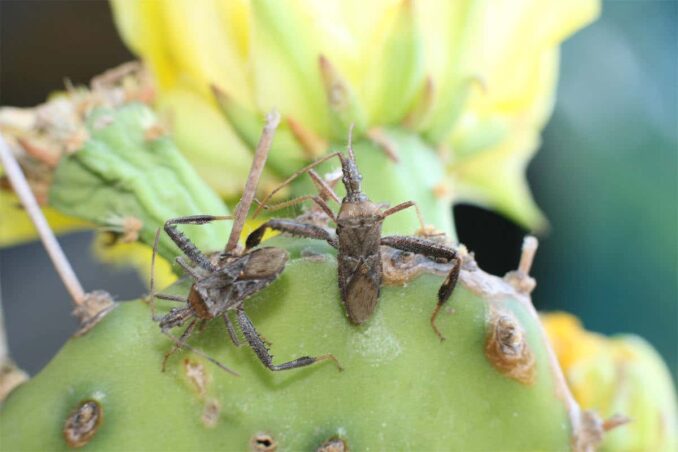
Source:newscientist.com
Mealybugs and spider mites love succulents and are often the reason why your plant is dying. As soon as you notice signs of these pests on your favorite houseplant, make sure to take immediate action. If you let them be, even for a short while, they can kill your succulent extremely quickly.
Luckily, getting rid of them is quite simple to do. Take a couple of cotton swabs, soak them in some rubbing alcohol, and apply it directly to the infested areas. This should be enough to do the job, but if things get out of hand, you can always purchase some miticide instead.
The bottom line
All of your succulents problems stem from either sunlight exposure (too much or lack thereof) or watering inconsistency (lack of a sound routine). Fixing these issues is quite easy as long as you recognize the signs. Whether the plant is swollen, yellowish, or pest infected, there’s a solution out there for every problem.
Overall, as long as you check your succulents regularly, you’ll be able to provide them with the conditions in which they can thrive.


